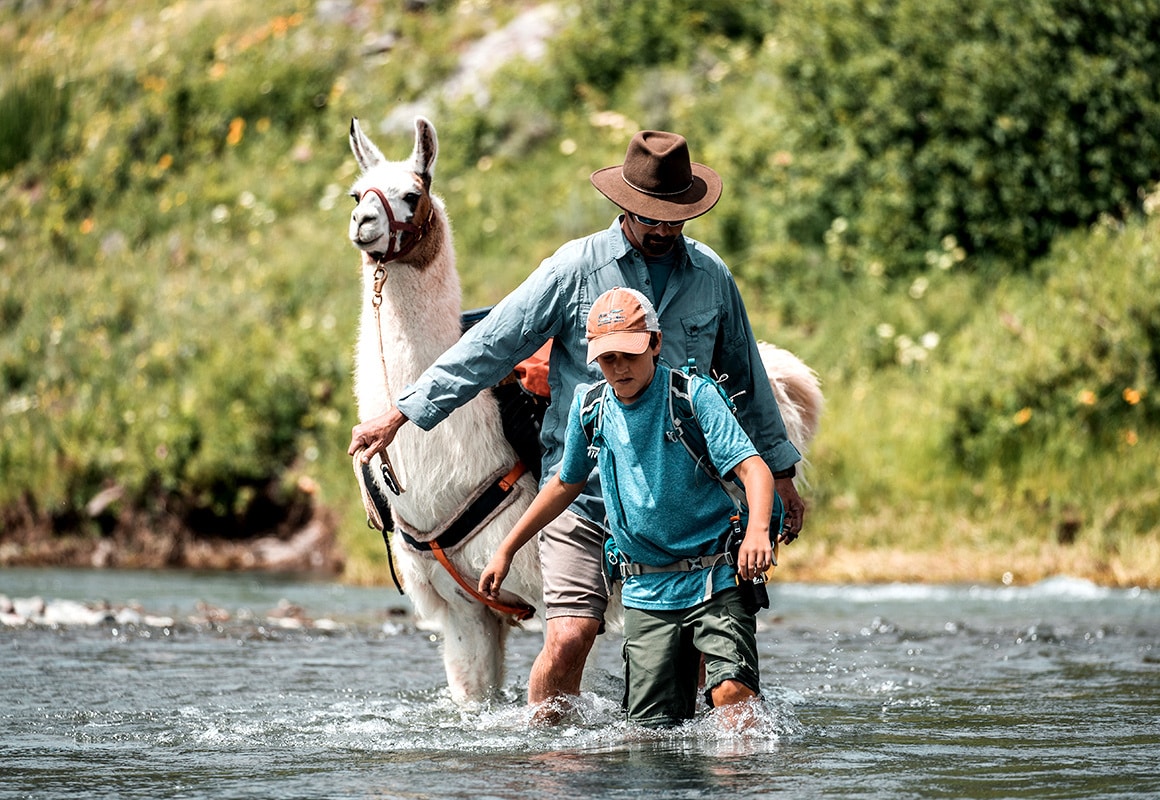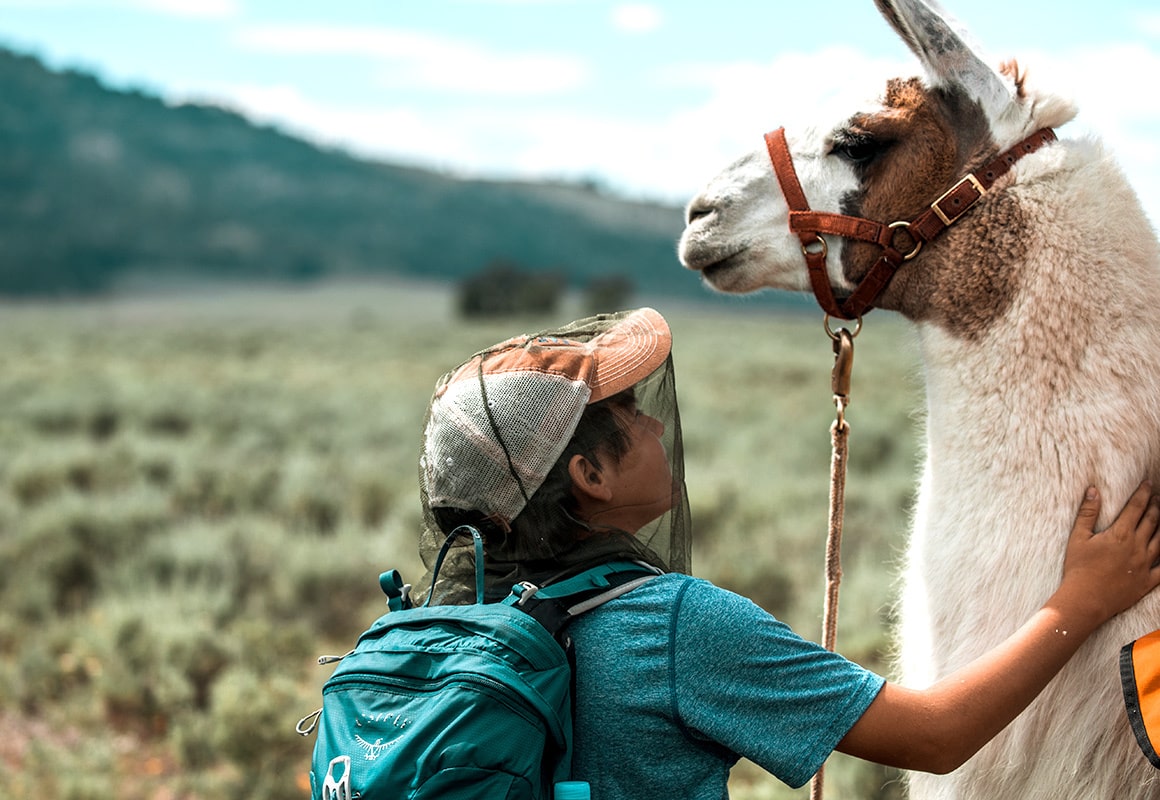We’ve all been there before. Down and out, broke, with only one possible solution to our woes: llamas.
Beau Baty was raised in Idaho in the tradition of horse and mule packing, but that life and all the family stock animals were gone. He was fresh out of college and looking to the future.
He’d been looking for an alternate pack animal for several years. Once while solo in the backcountry of Idaho, Baty shot a bull elk and needed a friend’s help to pack the bull out. The real issue began when his friend arrived and promptly shot another elk. The subsequent packout made him four days late for the fall semester of college that year.
He tried everything from burrows to mules, but whether they were too, small, lazy, or stubborn, nothing worked out. With his last $500, he took a chance and bought two pack llamas.
The plan partially worked. While one llama could hardly carry its weight the length of a football field, the other turned out to be a packing machine.
Soon Baty found he could rent his llama to a friend for a wilderness hunt for the price of his monthly rent.
Slowly, he began researching and acquiring a particular breed of llama called the ccara, which is known for its packing ability and not its wool production, like other breeds. Llamas were predominantly brought to the states for their wool, so Baty needed to search across and out of the country to find the ccara breed.
Llama by llama, Baty’s collection of pack animals slowly transformed into Wilderness Ridge Trail Llamas, the business he and his wife run today.

Pros of Hunting with Llamas
“Because of the rich history of llamas working alongside humans, they’re natural companions. According to Baty, their intelligence allows for just about anyone to handle them regardless of experience, as opposed to horses, which require an experienced wrangler or rider.”
- While they aren’t able to carry as much as a horse, one full-grown llama can carry nearly 100 pounds on its back.
- Traveling with horses requires specialized horse trailers just to get to the trailhead. The smaller llama can ride in a variety of crafts. Baty has traveled with llamas in trailers, vans, jet boats, and even a Cessna airplane.
- Llamas are also more well-rounded grazing animals that eat a larger variety of plants and less compared to a horse.
- Horses will often run when spooked, while llamas will act as guardians and turn to face danger.
- Llamas adapted to living in the mountains and have a split hoof which offers them more dexterity on rock and narrow trails.
- Llama wool offers superior insulation for the snow and becomes extremely beneficial on late-season hunts.

Meet Marcus the Pack Llama
Longtime onX ambassador and public land advocate, Randy Newberg got his first lesson in hunting with llamas in the fall of 2017 in the Wind River Range of Wyoming. Baty talked Newberg into taking a string of llamas seven miles into the mountain range.
Newberg admitted he was skeptical of taking the funny-looking animals elk hunting.
“I had this impression of ‘why am I getting talked into going on a trip with these ornery spitting things,’” he said. “Within the first mile, my head was spinning and I’m thinking, ‘I’m going to be backcountry elk hunting until I’m 70 now.”’
Later that fall, Newberg found himself sitting on a rock outcropping in New Mexico on an elk hunt with Leupold CEO Bruce Pettet. After a while on the rock, Pettet seemed to notice that Newberg was incapable of talking about much other than llamas.
“I’ve been backpack hunting for 30 years and I have yet to find something that has opened my eyes like llamas, especially when you’re 53 with a sore knee,” Newberg said. “If the conversion rate of taking a test drive in a car was anywhere near taking a test drive with llamas, selling cars would be easy.”
Eventually, Pettet came up with the notion of outfitting Newberg with a llama and naming it after Leupold founder Marcus Leupold as a means to highlight the importance of public land.
Leupold has always partnered with different organizations that support public land and this effort would provide their own avenue to highlight accessible public land.
Of course, the newly llama-obsessed Newberg jumped at the opportunity.
As did onX, continuing our devotion to accessible public land.
The Marcus campaign will highlight Newberg and Marcus as they go on more than five public land hunts across the West, including the famous Kaibab National Forest in northern Arizona and a bison hunt in the Henry Mountains of Utah.
All the while Marcus, will act as the ambassador who shows people the value of public land, while acting as the conduit for telling the stories of hikers, hunters, campers or anyone else who enjoy them.
Marcus already acted as a guide on a trip into Capitol Reef National Park in Utah, The Frank Church Wilderness in Idaho, and Yellowstone National Park in Wyoming.
“We need every ambassador and person to come to the public land discussion and llamas are going to help,” Newberg said. “It’s just another way to get people into the backcountry and the more accessible the backcountry is, the more advocates we are going to have for it.”
Follow all of Randy and Marcus’ hunting adventures this fall by following onX Hunt, Randy Newberg Hunter, and Leupold Optics on Instagram.